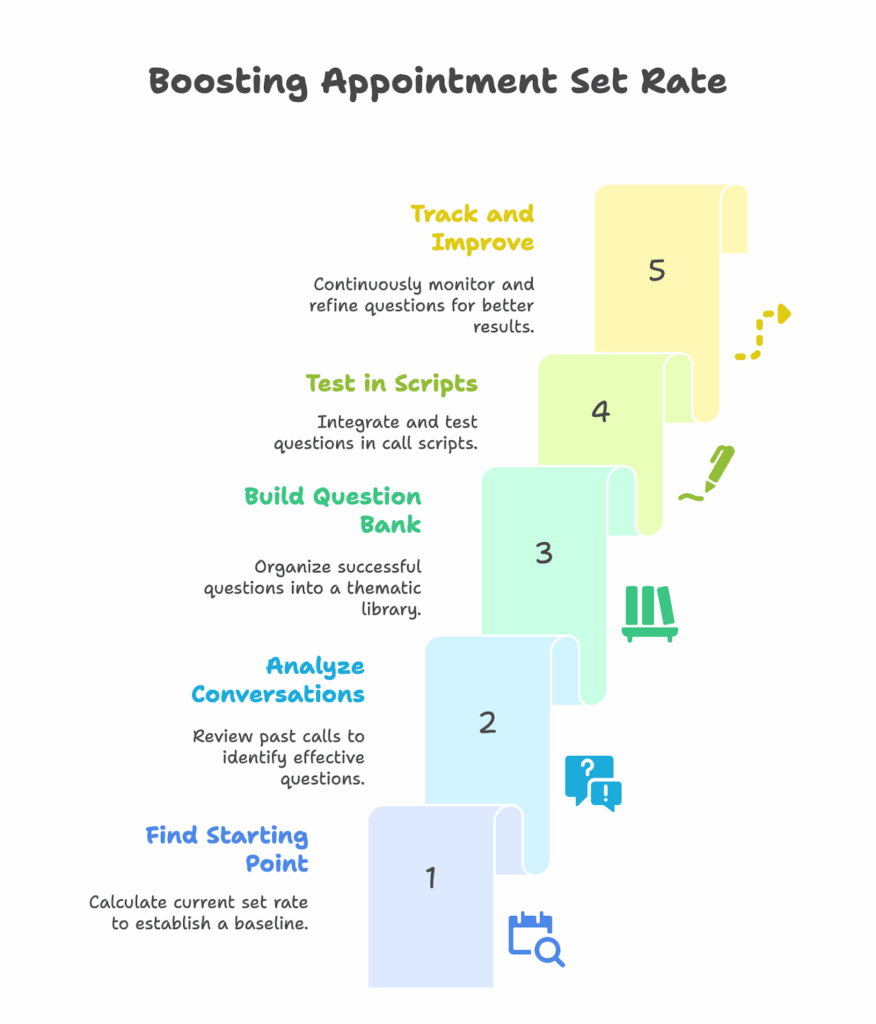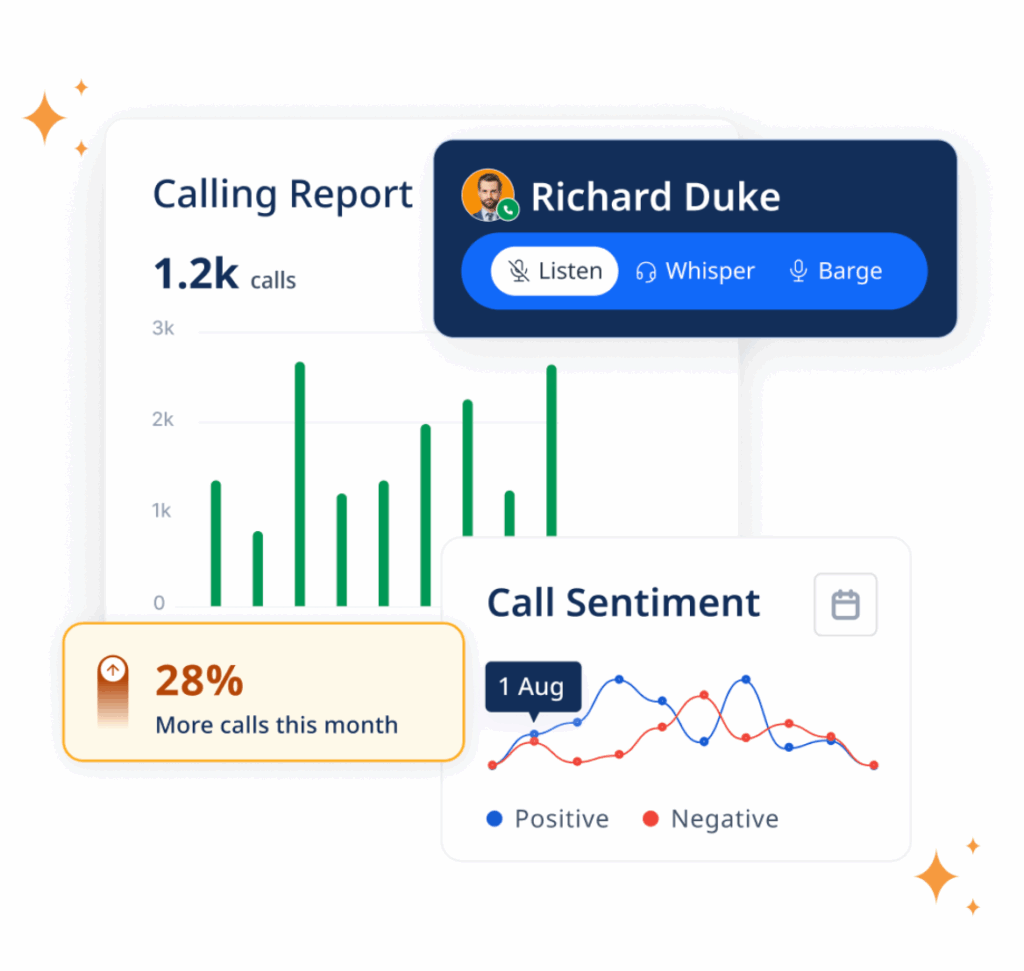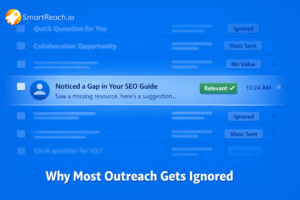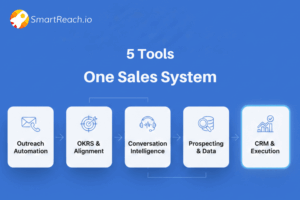Appointment Setting Tips: Generate More Leads
Getting prospects on a demo call is hard enough.
But you know what’s even harder?
Turning those email conversations/phone call conversations into actual appointments.
Most sales teams don’t fall short because of effort.
They’re dialing, pitching, and following up.
The real problem usually lies in the questions being asked.
A vague or rushed qualification question can waste a good lead, while a well-placed one can open the door to a solid meeting.
The good news is, improving your appointment set rate isn’t about doubling your calls or working longer hours. It’s about asking smarter questions and refining them over time.
In this blog, we’ll break down how qualification questions impact your set rate, how to identify effective vs ineffective ones, and the process you can use to refine your scripts for better results.
What is appointment set rate?
Appointment set rate is just a fancy way of saying how many of your calls actually turn into booked meetings.
Here’s the quick formula:
| (Appointments Set ÷ Total Calls) × 100 = Appointment Set Rate |
So, if you make 50 calls and book 10 meetings, your set rate is 20%.
Appointment rate shows how effective your conversations are.
Two reps can make the same number of calls, but the one asking better qualification questions will always end up with more meetings on the calendar.
That means more chances to close deals without increasing call volume.
How qualification questions impact appointment setting
The questions you ask during a demo call do more than just fill the silence.
They shape the direction of the conversation, determine how much insight you get from the prospect, and ultimately decide if you walk away with a meeting on the calendar.
Think of it this way: every call is an opportunity.
But if your questions don’t dig deep enough, you may walk away without learning anything useful. Worse, the prospect may feel you wasted their time.
On the other hand, effective qualification questions help you understand the prospect’s needs, budget, decision-making process, and timeline, all the details that make an appointment worth setting.
Here’s the difference in action:
❌ Ineffective: “Are you looking for a new solution right now?”
This forces a yes/no response and often ends the conversation.
✅ Effective: “What challenges are you facing with your current setup?”
This opens the door for prospects to share pain points, giving you the perfect angle to position your meeting as valuable.
❌ Ineffective: “Do you have the budget for this?”
Sounds pushy and puts the prospect on the defensive.
✅ Effective: “How are you currently investing in solving this problem?”
A softer approach that reveals spending patterns without scaring them off.
❌ Ineffective: “Can I send you some information?”
Easy way for prospects to brush you off.
✅ Effective: “Would it be useful if I showed you how others in your industry are solving this?”
Positions you as helpful, not pushy, and creates curiosity.
❌ Ineffective: “Who makes the decisions at your company?”
Can sound intrusive or abrupt.
✅ Effective: “Besides yourself, who else usually gets involved when deciding on solutions like this?”
Respectful, conversational, and still gets you the information you need.
When you stack enough of these effective questions into your calls, you start to notice a big difference: prospects feel heard, the conversation flows more naturally, and setting the appointment becomes the obvious next step.
Recommended Read: How to qualify leads for sales development?
5-step process to improve appointment set rate with better questions
Increasing your appointment set rate is all about building a repeatable process, analyzing your calls, spotting patterns, and then refining your scripts.
Here’s how you can do it step by step:
Step 1: Find your starting point
Before making changes, figure out your current set rate.
Look at your call outcomes and calculate how many calls actually turned into booked meetings.
| Formula: (Appointments ÷ Total Calls) × 100 |
This gives you a baseline so you can measure if your new questions are making a difference.
Step 2: Analyze past conversations
Don’t rely on memory.
Go back to call recordings or notes. Notice which questions kept prospects talking and which ones led to dead ends.
For example, if “Do you have the budget?” consistently shut people down, but “How are you currently investing in solving this problem?” sparked conversations, that’s a clear signal.
Step 3: Build a winning question bank
Collect the questions that worked well and organize them by theme, pain points, decision-making, budget, and timing.
This becomes your library of go-to qualification questions.
Step 4: Test them in your scripts
Update your call scripts with these strong questions and have your team use them consistently.
You can even test different variations to see which style resonates more with prospects.
Step 5: Keep tracking and improving
Improvement isn’t a one-time thing.
Keep monitoring your appointment set rate. Drop questions that don’t work, double down on the ones that do, and keep refining until you find the mix that gives you the best results.

How SmartReach.io helps manage the process
The fastest way to improve your appointment set rate is by learning from your own data.
Cold calling software like SmartReach.io gives sales teams more than just a dialer.
It tracks call outcomes, records conversations, and provides insights that help you understand what’s working and what’s not.
With built-in analytics and coaching tools, it turns every call into a learning opportunity to refine your qualification questions and boost appointment set rates.

Here’s how it makes life easier:
- See outcome data with zero effort
Every call, no matter the result, is documented. You get key details like call duration, connection rate, outcome, rep notes, and more, all tagged neatly so you don’t have to hunt for them.
This means you can track questions that led to appointments vs ones that didn’t with precision.
- Call sentiment analysis at a glance
Calls get categorized automatically as positive, neutral, or negative. That means you can quickly spot which questions helped build rapport and which sent prospects into defensive mode. It’s a shortcut to seeing what’s working. - Live coaching in the moment
Managers can listen in on live calls, whisper guidance, or jump in outright using Barge-In.
These features help sharpen questions on the fly and coach reps in how they phrase things to keep prospects engaged.
- Call recordings for reflection
You don’t just track results; you can revisit the conversation. Reps and managers can playback calls to hear exactly how questions were posed and how prospects responded. It’s ideal for refining phrasing. - Rich calling metrics for ongoing refinement
Dashboard insights show data across reps and campaigns: call count, connection rate, average duration, and outcomes.
That helps you test new questions, compare performance, and double down on the approaches that actually move the needle.
With SmartReach.io’s cold calling reports, every call becomes data you can learn from. Instead of guessing which questions work, you get real insights, helping your team refine their approach, improve qualification, and consistently set more appointments.
Try SmartReach.io’s cold calling.
FAQs on improving appointment set rate
Q1. What is the appointment setting rate?
The appointment setting rate is the percentage of calls or outreach attempts that result in a booked meeting. It’s usually calculated as:
(Appointments ÷ Total Calls) × 100.
Q2. How to be a better appointment setter?
Focus on asking open-ended qualification questions, listen actively, and show genuine interest in the prospect’s needs. Reviewing your past calls and refining your scripts can also make a big difference.
Q3. How to set more appointments in sales?
Improve your targeting, personalize your outreach, and use strong qualification questions. Consistently track what works (and what doesn’t) so you can keep improving your approach.
Q4. What makes you a good appointment setter sales rep?
A good appointment setter knows how to ask the right questions, build rapport quickly, and handle objections calmly. They don’t just push for a meeting, they make the prospect see value in having one.
Q5. Do appointment setters get commission?
In many sales organizations, yes. Appointment setters often earn a base salary plus commission for each qualified meeting or closed deal resulting from their efforts.
Q6. How to professionally set an appointment?
Be polite, respectful of time, and clear about the purpose of the meeting. Offer flexible scheduling options and always confirm the details in writing (like an email or calendar invite).
Q7. Why do qualification questions matter in appointment setting?
They help you filter out unfit prospects and focus only on leads worth pursuing. This saves time for both the rep and the prospect while increasing the chances of booking quality meetings.
Q8. What is a good appointment set rate?
It varies by industry, but generally, a set rate of 15–25% is considered strong. Anything above that often means your questions and targeting are working very well.
Q9. How can tools like SmartReach help improve appointment setting?
By tracking call outcomes, providing recordings for review, and offering reports that highlight what’s working, SmartReach makes it easier to refine your qualification questions and boost set rates over time.




